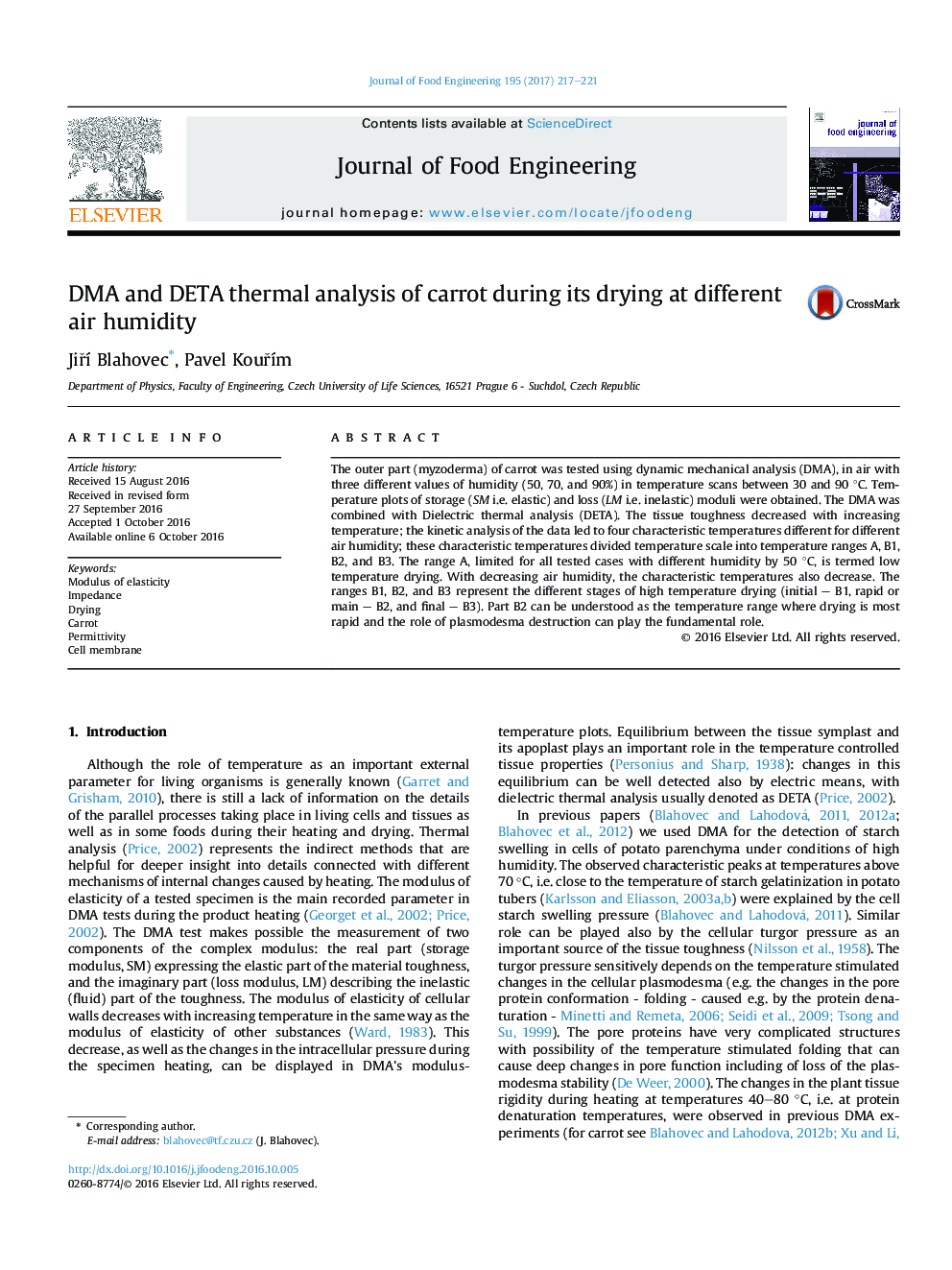| Article ID | Journal | Published Year | Pages | File Type |
|---|---|---|---|---|
| 6477617 | Journal of Food Engineering | 2017 | 5 Pages |
â¢The temperature scale is divided into low and high temperature drying.â¢High temperature drying has initial, rapid and final parts.â¢The drying parts of carrot are identified via DMA and DETA analysis.
The outer part (myzoderma) of carrot was tested using dynamic mechanical analysis (DMA), in air with three different values of humidity (50, 70, and 90%) in temperature scans between 30 and 90 °C. Temperature plots of storage (SM i.e. elastic) and loss (LM i.e. inelastic) moduli were obtained. The DMA was combined with Dielectric thermal analysis (DETA). The tissue toughness decreased with increasing temperature; the kinetic analysis of the data led to four characteristic temperatures different for different air humidity; these characteristic temperatures divided temperature scale into temperature ranges A, B1, B2, and B3. The range A, limited for all tested cases with different humidity by 50 °C, is termed low temperature drying. With decreasing air humidity, the characteristic temperatures also decrease. The ranges B1, B2, and B3 represent the different stages of high temperature drying (initial - B1, rapid or main - B2, and final - B3). Part B2 can be understood as the temperature range where drying is most rapid and the role of plasmodesma destruction can play the fundamental role.
